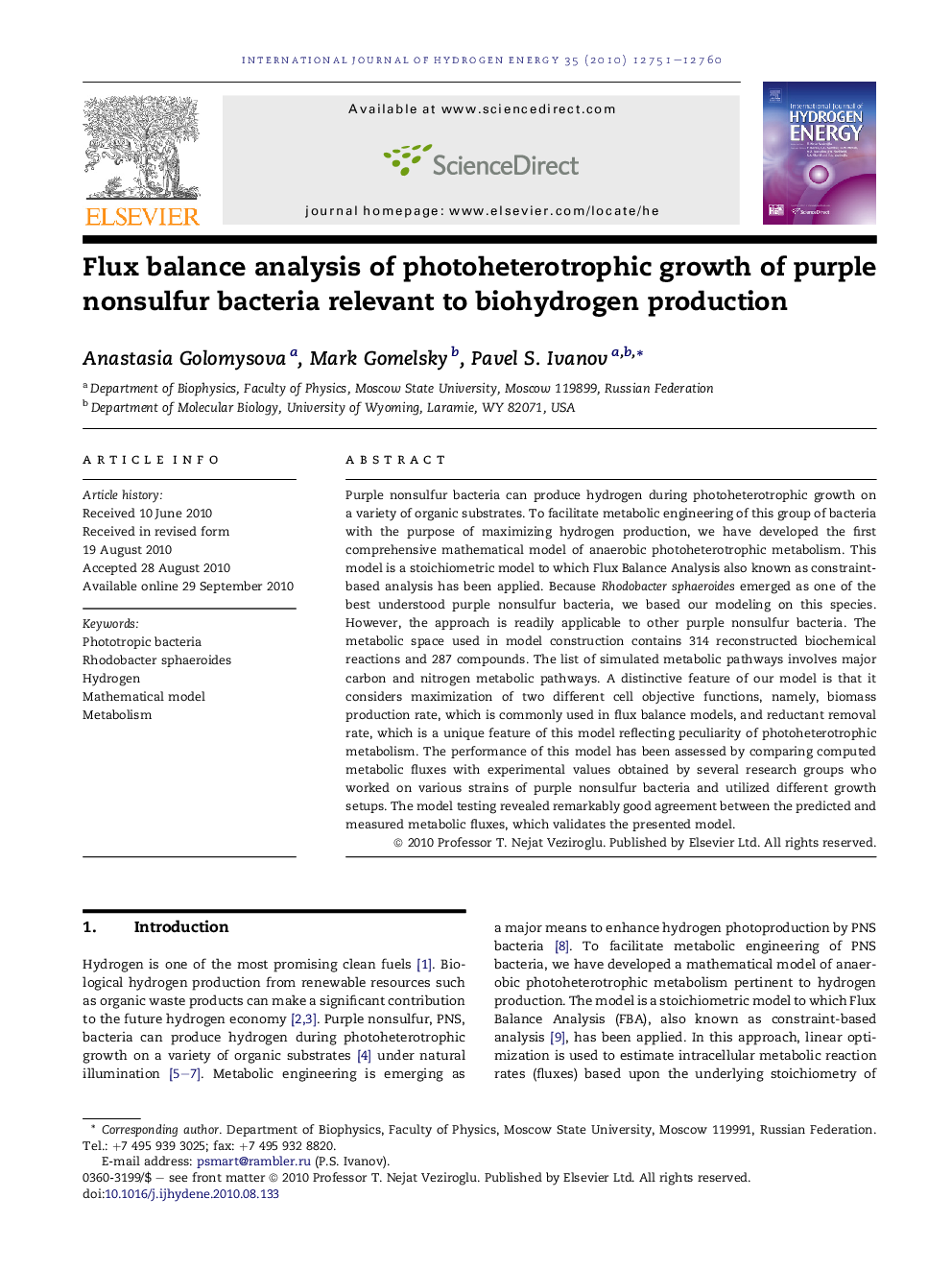| Article ID | Journal | Published Year | Pages | File Type |
|---|---|---|---|---|
| 1279916 | International Journal of Hydrogen Energy | 2010 | 10 Pages |
Purple nonsulfur bacteria can produce hydrogen during photoheterotrophic growth on a variety of organic substrates. To facilitate metabolic engineering of this group of bacteria with the purpose of maximizing hydrogen production, we have developed the first comprehensive mathematical model of anaerobic photoheterotrophic metabolism. This model is a stoichiometric model to which Flux Balance Analysis also known as constraint-based analysis has been applied. Because Rhodobacter sphaeroides emerged as one of the best understood purple nonsulfur bacteria, we based our modeling on this species. However, the approach is readily applicable to other purple nonsulfur bacteria. The metabolic space used in model construction contains 314 reconstructed biochemical reactions and 287 compounds. The list of simulated metabolic pathways involves major carbon and nitrogen metabolic pathways. A distinctive feature of our model is that it considers maximization of two different cell objective functions, namely, biomass production rate, which is commonly used in flux balance models, and reductant removal rate, which is a unique feature of this model reflecting peculiarity of photoheterotrophic metabolism. The performance of this model has been assessed by comparing computed metabolic fluxes with experimental values obtained by several research groups who worked on various strains of purple nonsulfur bacteria and utilized different growth setups. The model testing revealed remarkably good agreement between the predicted and measured metabolic fluxes, which validates the presented model.
